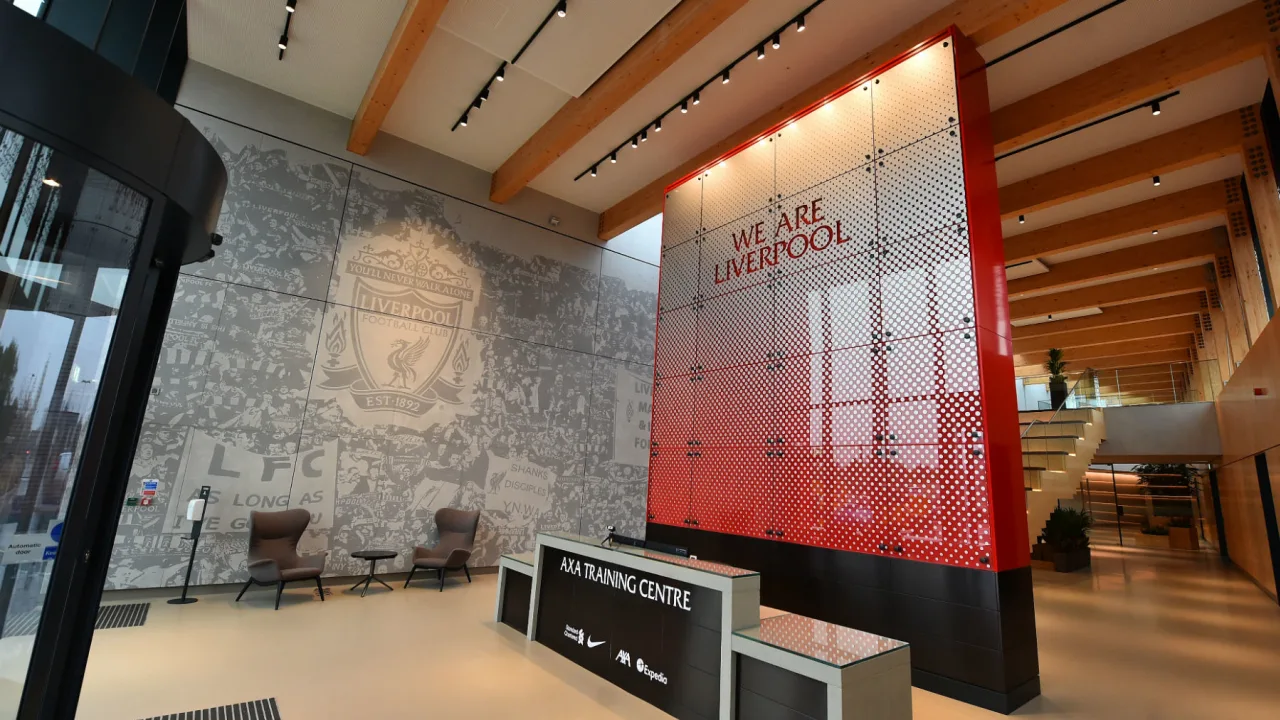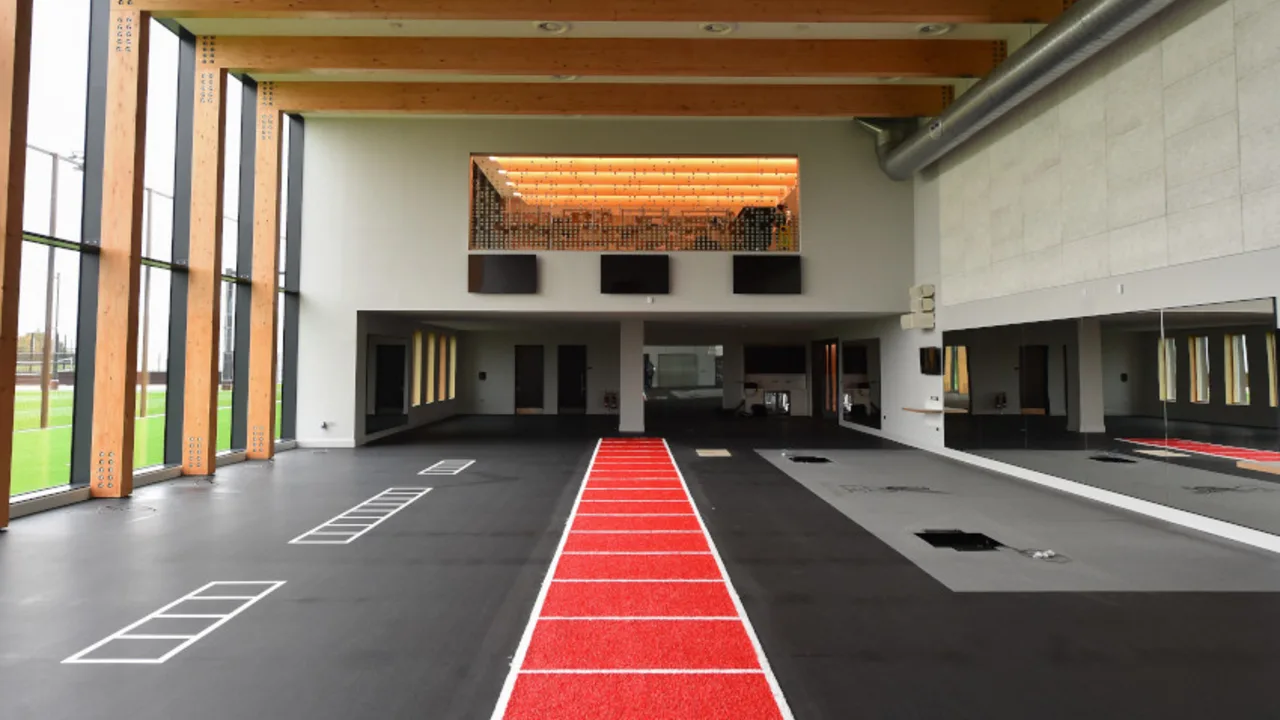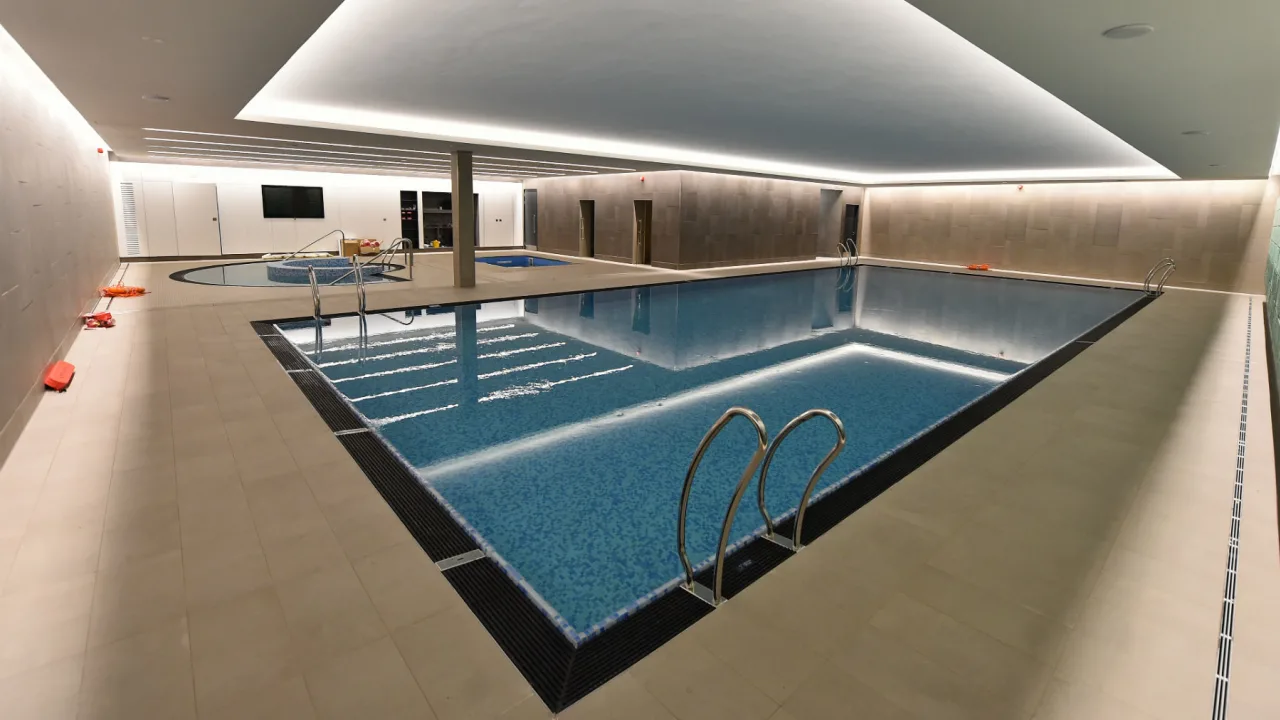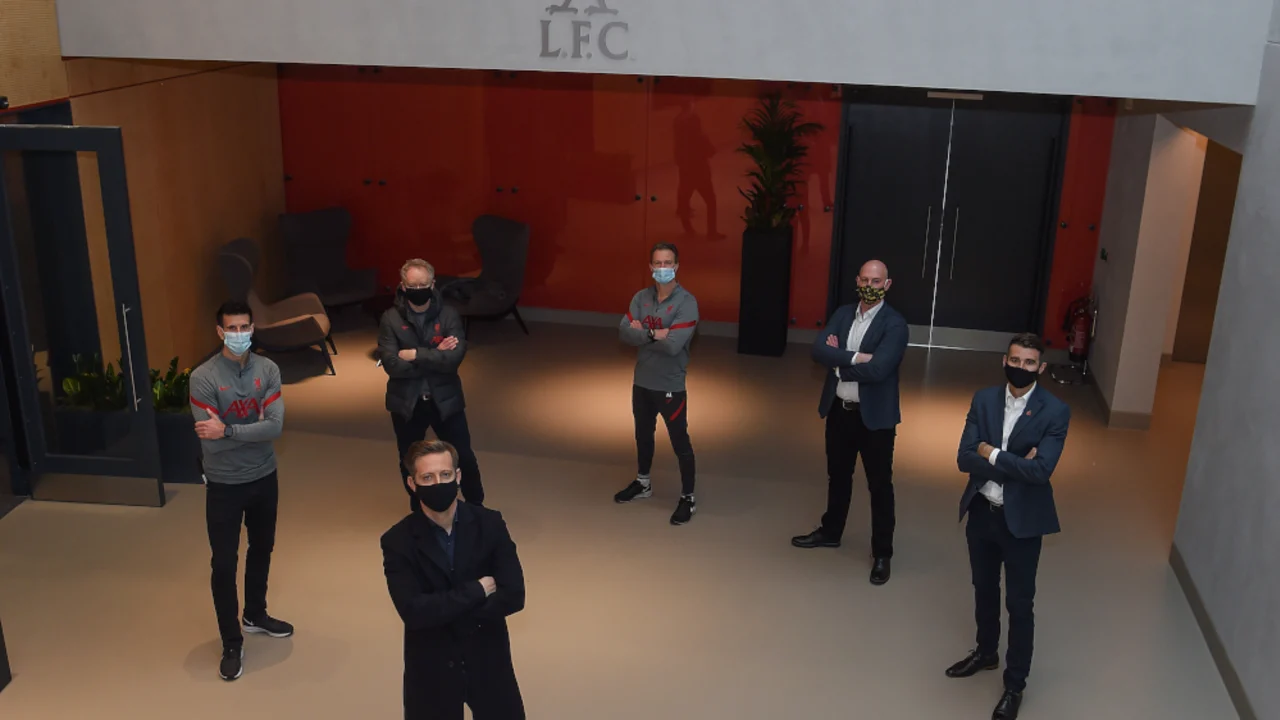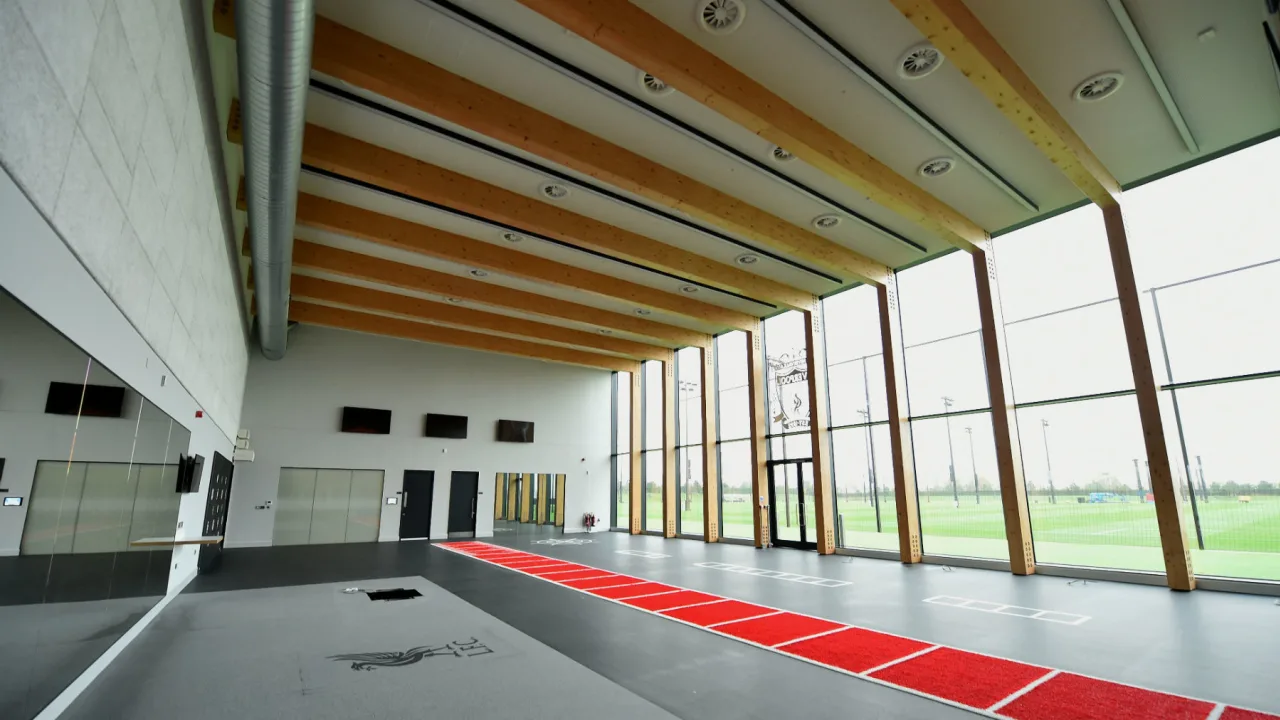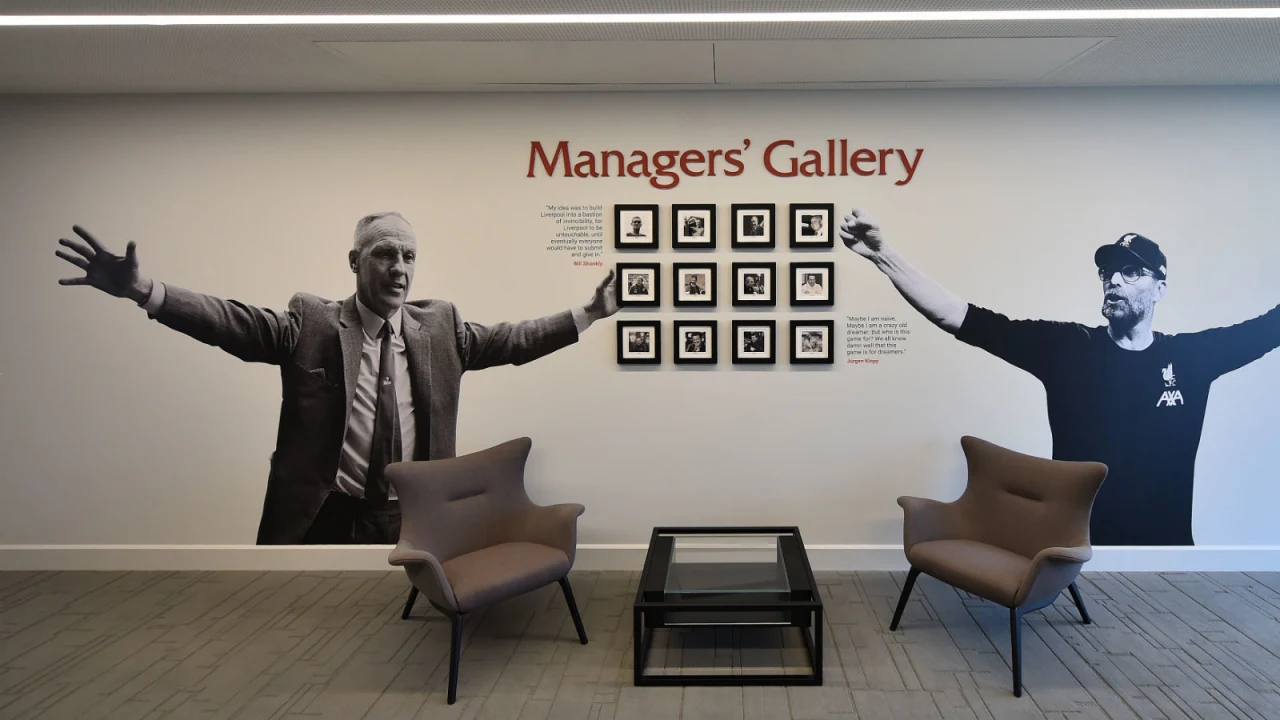Scrapped plans, Salzburg, small details: How the AXA Training Centre was designed
A traffic-free drive from Melwood to Kirkby takes around 15 minutes.
But the journey completed by Liverpool Football Club this month – to bring together first team and Academy operations on the latter site, with the new AXA Training Centre – was one of wide-ranging global research, development and collaboration over more than four years.
The Reds’ new day-to-day home represents the final product of the many inter-connected requirements and ideas, as well as multiple sources of design inspiration, that have fed into the huge undertaking.
Ultimately, one vision lay at the heart of the whole process: to provide a world-class, industry-leading base for Liverpool’s current and long-term ambitions.
“Since I have been at Liverpool there has been a desire for us to all be on the same site,” sporting director Michael Edwards told Liverpoolfc.com. “To be honest, I think many people before me wanted the same thing and now we have been lucky enough to deliver that.
“The other key reason was to make sure that we were giving our players and staff up-to-date, world-class facilities.
“Melwood is a great place to work, with some great memories for all those people that have worked there, but we needed more space and the chance to include all the things our players and staff need to fulfil their roles on a daily basis.”
The result is a 9,200sqm base that features three full-size pitches, goalkeeping and warm-up areas, and state-of-the-art indoor facilities including two gyms, a sports hall, pool, hydrotherapy complex and specialist sports rehabilitation suites.
Jürgen Klopp, his staff and the players officially move into the AXA Training Centre today, bringing an end to the Reds’ 70-year stay at Melwood and settling into an environment crafted to continue their success.
Work towards the new training ground began to gather pace back in mid-2016, when initial plans were drawn up by the contracted architects, KSS, and subsequently presented to Edwards shortly after his appointment as the club’s first-ever sporting director.
Melwood, the club’s training home since 1950, was still headquarters for the steady revolution being overseen by Klopp and his backroom team, a hub of analysis, preparation, problem-solving and togetherness. A place for commiseration and celebration.
But the West Derby complex was simply too small to accommodate the needs of a first-team set-up growing in size and expanding its objectives. The Reds would have to move.
KSS soon presented blueprints to the club for feedback but a decision was taken to shelve those original plans in favour of relaunching the design project anew, for two key reasons.
Firstly, it was deemed imperative for the architects to engage more closely with the various departments at Melwood and – given the new base would be their working environment to maximise – understand their specific needs from a football perspective.
Secondly, the club wanted to conduct a benchmarking review of training ground innovations and best practices in this country, across Europe and in the United States.
There was a hurdle, though: time. An alternative plan would have to be produced within three months. Research began quickly.
Edwards and Academy director Alex Inglethorpe travelled to Brighton & Hove Albion and Tottenham Hotspur’s training grounds – the other two bases in England designed by KSS, which had been completed in 2014 and 2012 respectively – for a first-hand look at what was possible and improvable in conjunction with the London-based company.
Liverpool liaised especially closely with Red Bull Salzburg, the champions of the Austrian Bundesliga for the past seven seasons and a club with a stellar reputation for recruiting and developing elite players, including the Reds’ own Naby Keita, Sadio Mane and Takumi Minamino.
During extensive conversations with senior staff, architects and designers at Salzburg, their much-admired facility in Liefering – the Red Bull Academy – made a hefty impression on the visitors from Merseyside and became a reference point for the look and feel of the AXA Training Centre.
Its abundant natural light, spacious corridors, open offices and use of glass, wood and concrete provided a template that was subsequently shaped and tweaked to Liverpool’s own culture and needs in Kirkby.
The Reds examined the approach of Bundesliga outfit Hoffenheim, too, and conducted virtual tours of training centres in America across several sporting disciplines.
Back at home, meanwhile, KSS drilled into the detail at Melwood, regularly meeting with each of the departments that make up Liverpool’s football operation to compose a wish list for their future HQ. Their input was critical to the process, ensuring each space at the AXA Training Centre would be optimal for the people working within it.
A busy three months ended with a design concept established and after receiving planning approval for the development from Knowsley Metropolitan Borough Council, the club ‘broke ground’ at Kirkby to begin the building process in September 2018.
The next phase of the process was managed by Martin Jennings from the club’s capital projects department, as building contractors McLaughlin & Harvey set about creating Liverpool’s vision.
“There have been so many people on site that you wonder how they are all managed and sequenced to make sure the build runs smoothly,” explained Edwards.
“That’s where Martin Jennings comes in really, I have a huge amount of respect for the job he has done in making sure the reality matches the plans. It’s not easy to balance so many stakeholders and to hit their expectations, especially when a few of them are trying to win football matches at the same time.”
Jennings’ primary link at Melwood was David Woodfine, an ex-naval officer and former head of analysis at West Ham United who joined the Reds as scouting co-ordinator.
In recent years, however, Woodfine’s efficiency in organisation and planning was identified as an ideal fit for wider football projects, too. So, when the vast challenge of moving the entire first-team squad and staff from one site to a completely new one arose, he was the man to handle it.
The pair worked tirelessly with KSS to turn drawings on a page into the structural reality of a training centre not only fit to house the world champions now, but futureproofed for the generations to follow them.
For full article, please visit Liverpool FC.


